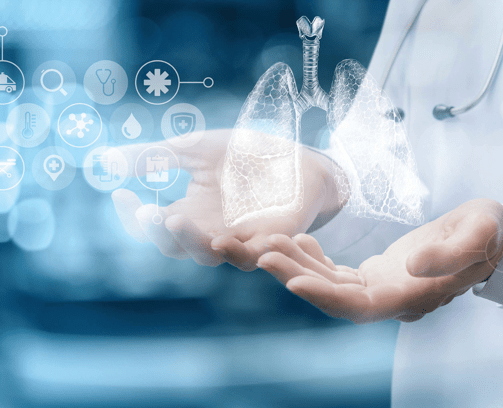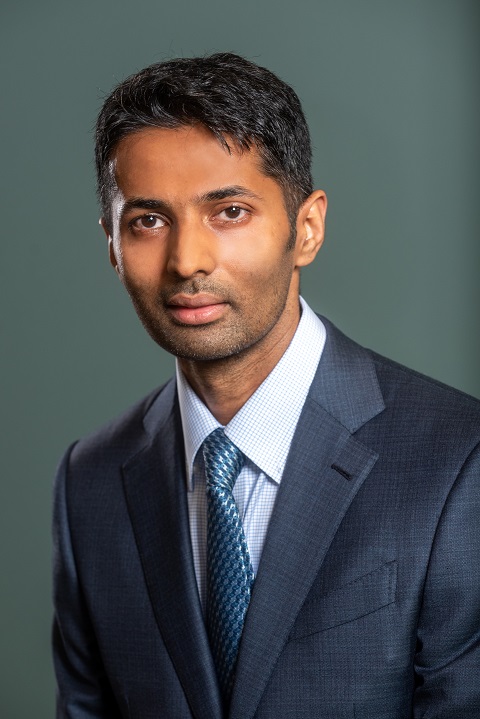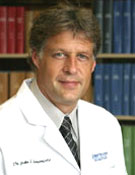
Lung cancer is the second most common cancer in both men and women (not counting skin cancer) and is the leading cause of cancer deaths.
Despite those scary statistics, there are reasons for hope. Due to a decline in smoking and advances in early treatment and detection, the incidence of lung cancer death is decreasing.

“Early detection is key for curing all cancers, but especially lung cancer,” says Pawan Gundavaram, MD, a hematologist/oncologist with Robert Wood Johnson University Hospital (RWJUH) Rahway.
In spite of lung cancer being widespread, many people aren’t familiar with its causes, symptoms and treatments.
What Are the Kinds of Lung Cancer?
There are two primary types of lung cancer, non-small cell and small cell. (The names refer to the appearance of the cancer cells under a microscope.)
Non-small cell lung cancer (NSCLC), a condition in which malignant cells form in the lung tissues, represents 80 to 85 percent of lung cancers. Several subtypes make up this category, each of which begins with a different type of lung cell. They include squamous cell carcinoma, adenocarcinoma and large cell carcinoma. Each type grows and spreads differently, though they have similar treatments and outcomes.
With small cell lung cancer (SCLC), cancer cells also form in the tissues of the lung. It’s less common and mostly afflicts smokers. SCLC typically occurs in the central airways and is often more aggressive than NSCLC.
What Are the Risk Factors?
Current and past smokers account for nearly 80 percent of cases. Risk is also impacted by the number of years and the number of packs a person has smoked.
Other risk factors include:
- Age (the average age of diagnosis is 70 years).
- Family history of lung cancer.
- Exposure to secondhand smoke.
- Previous radiation therapy to the lungs.
- Exposure to radon gas, asbestos or other carcinogens.
A small portion of lung cancers occur in people with no known risk factors for the disease.
What Are the Symptoms?
Many patients have few symptoms until lung cancer is advanced. Go to your doctor when you first notice possible signs or symptoms; if it is cancer, your best outcome will happen if it is diagnosed at an early stage. The most common symptoms include:
- A cough that won’t go away or becomes worse.
- Coughing up blood.
- Shortness of breath.
- Appetite or weight loss.
- Chest pain that is worse with deep breathing.
- Hoarseness.
- Wheezing.
- Fatigue or weakness.
- Persistent bronchial infections.
How Is It Diagnosed?
Most lung cancer is diagnosed after it begins causing problems, such as the symptoms listed above. To check for lung cancer, a primary care provider may request an imaging test, such as a CT (computed tomography) scan or an MRI (magnetic resonance imaging) scan. A physician may also test cells taken from lung secretions, such as mucus, or do a biopsy with a needle to get a sample of a suspicious area. This past March, for the first time in nearly a decade, the U.S. Preventive Services Task Force updated its lung cancer screening guidelines. The new guidance advises annual low-dose CT scans every year for people who meet the following criteria:
- Aged 50 to 80 years.
- Have 20 pack-year smoking history. (One pack year equals smoking one pack a day for one year or two packs a day for half a year, and so on.)
- Currently smoke or have quit within the past 15 years.
“This means that if you’ve smoked a pack a day for 20 years you are now eligible for a low-dose CT scan, which most insurances will pay for,” Dr. Gundavaram says. “Low-dose CT scans are the most effective way of detecting cancer. At Stage 1, you can cure 90 percent of lung cancer cases.”
What Are the Treatments?
For early-stage SCLC, surgery followed by chemotherapy and possibly radiation treatments are commonly used. For patients with SCLC that has spread far throughout the body, chemotherapy with or without immunotherapy—medicines that stimulate a person’s own immune system to recognize and destroy cancer cells—can shrink the cancer and treat symptoms.
For NSCLC, a number of different treatments are used, often in combination, based on the cancer stage.
“Surgery is commonly utilized in the treatment of early stage non-small cell cancer,” Dr. Gundavaram explains. “Chemotherapy and radiation may be added when there is risk of cancer spreading.”
Increasingly, innovative “targeted treatments,” which specifically attack cancer cells—unlike chemotherapy, which doesn’t distinguish between normal cells and cancer cells—can be used to treat some cases of non-small cell lung cancer.
New Treatments, New Hope “We have an increasing number of treatment options for lung cancer,” says thoracic surgeon John Langenfeld, MD, Co-Director of the Thoracic Oncology Program at Rutgers Cancer Institute of New Jersey. “For cancers found at an early stage, such as those identified through low-dose CT scans, surgery is a major mode of treatment.”
|
You Can Quit SmokingWe Can HelpFree programs to help people quit smoking and vaping are available through the RWJBarnabas Health Institute for Prevention and Recovery. Call 833-795-QUIT (7848). |
To schedule an appointment with a cancer specialist at RWJUH Rahway, call 844-CANCERNJ or 844-226-2376.